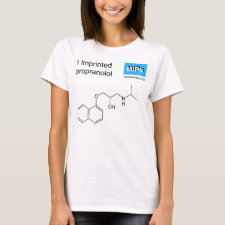
Authors: Lu XC, Zheng CG, Zhang HQ
Article Title: Improvement of surface hydrophilicity and biological sample-compatibility of molecularly imprinted polymer microspheres by facile surface modification with α-cyclodextrin.
Publication date: 2019
Journal: European Polymer Journal
Volume: 115
Page numbers: 12-21.
DOI: 10.1016/j.eurpolymj.2019.02.044
Alternative URL: https://www.sciencedirect.com/science/article/pii/S0014305718320792
Abstract: Molecularly imprinted polymers (MIPs) compatible with complex biological samples hold much promise in many bioanalytical and biomedical applications and development of new strategies for obtaining such advanced synthetic receptors is thus of high interest. Herein, a facile and efficient new approach is presented for the preparation of MIP microspheres capable of selectively recognizing small organic analyte in the complex biological sample, which involves the simple surface modification of MIP particles bearing polyethylene glycol (PEG) brushes with α-cyclodextrin (α-CD). The proof-of-principle was demonstrated by the first synthesis of propranolol-imprinted polymer microspheres bearing PEG brushes of different molecular weights (Mn = 2000 and 5000) via our previously developed reversible addition-fragmentation chain transfer (RAFT) coupling chemistry, their supramolecular inclusion complexation with α-CD, and subsequent chemical crosslinking. The chain length of the surface-grafted PEG brushes showed much influence on the water-compatibility of MIPs. Whereas the MIP particles bearing PEG brushes of Mn = 2000 hardly showed specific template bindings in both pure water and pure milk, those bearing PEG brushes of Mn = 5000 exhibited moderate specific template bindings in pure water. Nevertheless, the latter MIP particles still failed to show enough specific template bindings in pure milk. The inclusion of α-CD onto PEG brushes proved to largely enhance the surface hydrophilicity of MIPs and lead to their much improved water-compatibility. In particular, the MIP microspheres bearing α-CD-modified PEG brushes of Mn = 5000 showed excellent specific template bindings in both pure water and pure milk. The above strategy not only paves the way for efficiently preparing biological sample-compatible MIPs, but also opens the possibility of generating many other advanced biomaterials with high antifouling properties
Template and target information: propranolol
Author keywords: Molecularly imprinted polymers, biological samples, RAFT coupling chemistry, Polyethylene glycol brushes, α-Cyclodextrin



Join the Society for Molecular Imprinting

New items RSS feed
Sign-up for e-mail updates:
Choose between receiving an occasional newsletter or more frequent e-mail alerts.
Click here to go to the sign-up page.
Is your name elemental or peptidic? Enter your name and find out by clicking either of the buttons below!
Other products you may like:
 MIPdatabase
MIPdatabase









